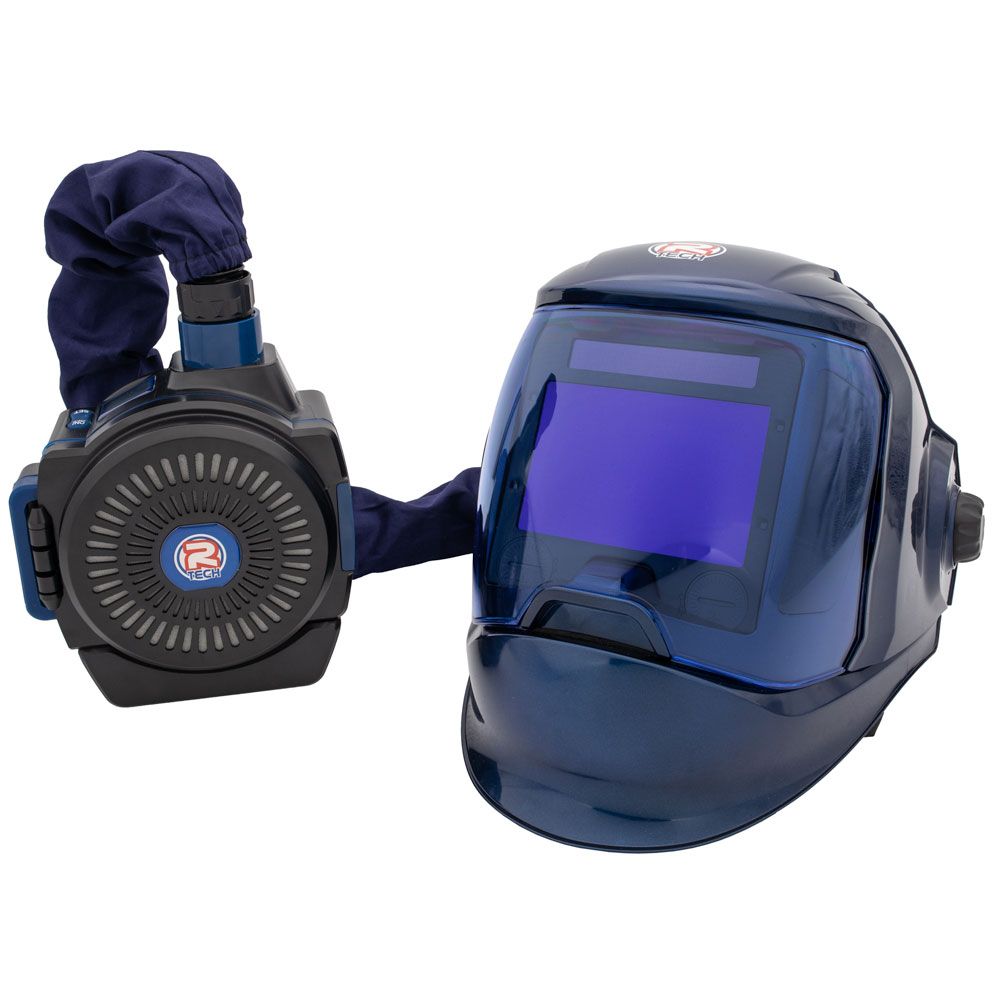Welding Talk - Choosing a Welding Helmet
Choosing a welding helmet correctly is one of the most important things you can do for your safety and productivity in an amateur or professional welding environment. If you ask our team, they’ll tell you that as well as being important, it’s also a huge topic. In this article we take you through some of the things you need to know about choosing your welding helmet...
Long gone are the days when a welding helmet (or welding mask) was, well, a welding mask. Nowadays, whether you hobby-weld in your garage or work at the highest level in industry, your choice of helmets has never been greater. The correct choice is vital for your safety and productivity – buy badly and you’ll soon be forking out again; buy wisely and a good welding helmet will look after you and your eyes for years. To simplify a big subject a bit, let’s look at some of our best-selling welding helmets and how they represent the masks available.
Our entry-level welding helmets
Kicking off, we have the entry-level WA-FXST200 Passive. It’s a classic non-reactive (‘passive’) welding helmet that requires fitting of different glass for different shading requirements. It’s a sound, basic mask for occasional welders. However, given how competitively priced even today’s most sophisticated helmets are, we reckon it makes sense to look further up the range.
As our sales adviser Mike Gadsby (an experienced professional welder) explains, some welders have used passive masks for decades. ‘It’s not unusual to speak to a welder who swears by traditional passive helmets; when we urge them to try a modern, better-featured, productivity-boosting, auto-darkening helmet, they’re usually amazed.’
Auto-darkening welding masks
At its most basic, ‘modern’ and ‘better featured’ means an auto-darkening mask such as our entry-level auto-darkening RT-WMASK3 with shades from 9–13. It’s suitable for MMA welding, MIG and some TIG work and also has a grinding mode. However, it’s not suitable for low-amperage TIG welding.
Helmets, amps and shade lightening
Mention of low-amperage TIG introduces the importance of carefully considering the relationship between welding amperage, specific welding processes and shade-setting ranges. For instance, a 9 or 10 shade should be fine for general MMA or MIG. However, precision low-current TIG welding demands a lighter shade.
Does how to choose a welding helmet suddenly look more complicated than you thought? Don’t worry, because we are here to help you through the selection process to the right helmet for you – and not necessarily the most expensive one.
Moving up through our range, the RT-WMASK2 is a very capable mid-range mask. It boasts a larger viewing area, 9–13 shade options, grinding mode, four sensors and replaceable batteries to support long service life. For most people, we think, this is helmet should be the starting point for serious TIG welders.
R-Tech masks and other brands’ too
Welding masks with the RT prefix are our own. Of course, we also stock a selection of carefully selected masks from other manufacturers. Check out, for example, Weldability’s auto-darkening WA-FXAD950S Phantom extreme mask. You’ve got to admire its 5–8 EW and 9–13 EW shades – and super-cool graphics! And then there’s 3M’s Hornell Speedglas 9100V. This is possibly the best welding mask you can buy – from the people who invented auto-adjusting welding masks.
Air-fed welding helmets
Of course, because they’re at the pinnacle of personal protective equipment (PPE), you’ll find air-fed welding masks in our range. The whole subject of personal protective equipment was highlighted in February 2019 with the UK Health & Safety Executive’s safety alert: ‘Change in Enforcement Expectations for Mild Steel Welding Fume’. Read our article here – at its heart is the role of air-fed welding helmets such as the Air fed welding mask R-Tech Spiritus Air-Pro

By now you’ve probably realised there’s much more to welding mask selection than you first thought. Now, add replacement lenses and internal magnifiers to passive, auto-darkening, true-colour and air-fed alternatives and you might fancy some professional help.
Want help on how to pick a welding helmet?
Two sensors or four, true-colour or not, EN numbers and UV/IR DIN standards? If you’ve a question about choosing and using welding helmets, our team will help you choose the perfect mask.
With decades’ experience in welding, we have a great source of advice about helmets to suit your welding project, your head, your budget and even, in the case of those Phantoms, your graphic taste.
Send us an email, call us or drop in and try some helmets!
